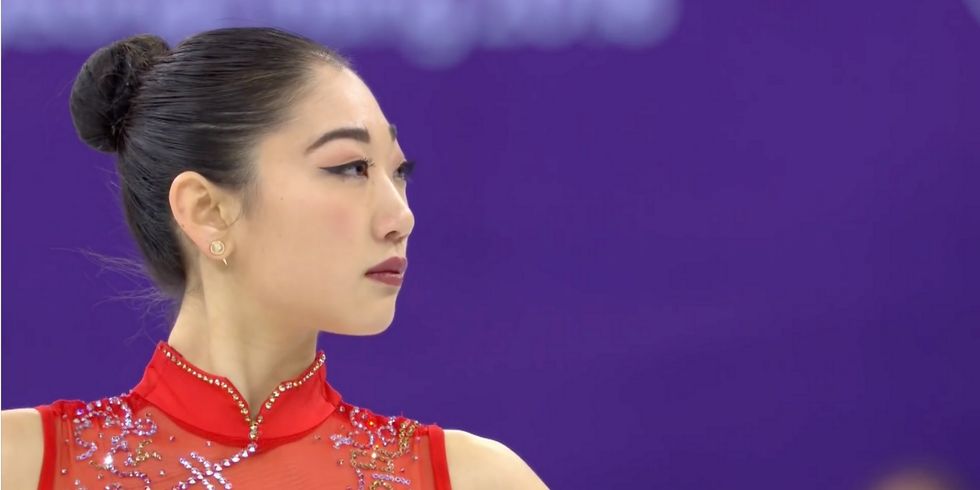The Winter Olympics in PyeongChang has mine and my roommates’ attention as we’ve spent nearly every night watching and yelling at our TV since the games started. We try to watch everything, but the event of our choice? Anything involving glittery costumes, sharp blades and gravity-defying athleticism choreographed to the tune of pop songs. Be it figure skating, ice dancing, pairs, short or long program or whatever else there is, it isn’t a coincidence that a group of four ballet dancers loves watching the only thing similar to what we do in the Olympics. But, it got us thinking: why isn’t ballet an event in the Olympics?
It’s easy to see the similarities between certain events in the Olympics and ballet. From the ice skating events listed above, and certain aspects of gymnastics in the summer Olympics, there are comparable artistic and athletic elements between them: the pre-choreographed routines, the artistic lines and shapes the body makes and the visually appealing costuming. These events and ballet are not necessarily like other sports, where points are gained through solely-athletic races or balls into goals. In order to be judged similarly, however, they have been adapted to a points system that incorporates both the athletic and artistic elements. With the natural competitive atmosphere of ballet and the many ballet and dance competitions that exist nowadays, it seems like a natural adaption for ballet to progress into an Olympic-like event.
While it seems like an easy transition, the majority of my roommates argue that ballet wouldn’t be ballet if it were an Olympic event. Historically, ballet was created as a status symbol for upper-class French royals and was passed on to make young and talented European women and men the celebrities of the 19th and 20th century. It symbolized high society, fine arts and exists to be performed, not to compete within a purely athletic competitive nature. While most routines in the Olympics are choreographed for the athlete in question’s skills and strengths, variations and pas de deuxs were choreographed hundreds of years ago, and while small changes are typical, there isn’t much room for deviation.
Although there are ballet competitions that seem to have a successful judgment system, it would be difficult to have a system similar to what is used in the Olympics. Athletes in the Olympics must include certain elements like jumps or flips into their routines in order for them to be judged properly and against each other. Competing in ballet would not work this way, as each variation has many different elements that aren’t comparable to others. You could never put a Lilac Fairy and a Gamzatti next to each other in this system and expect to have a fair shot. There are also elements in these Olympic sports that are easier to assign to a points system than to the many different steps in ballet. Each step is equally important, from huge pirouettes and sautés to simple walks and poses. This would be far too complicated for each and every element in a variation to be judged.
Realistically, professional ballet dancers would never be able to prepare the same ways Olympic athletes prepare for the Olympics. We audition for many different companies worldwide and travel anywhere and everywhere to hopefully be accepted into one of these companies. If we do actually get in, we dedicate our whole 32 weeks (or possibly less) to being involved in the company. We go to extra rehearsals, we cross-train at the gym, we do anything show our bosses why we deserve to be there and why we deserve to get moved up. And when we’re not doing that, we probably need a second job to try and make ends meet. We could never have time to perfect and train for an Olympic event at the caliber that Olympic athletes do.
The technicalities would never make sense either. In ballet, artistry is the same level of importance as technique, and that just isn’t so in Olympic events. In Olympic events, points are not taken away if you are less artistic, but in ballet, watching a technically-proficient but the expression-less dancer is not what people spend hundreds of dollars to see. Artistry is also a very difficult element to judge as it is very subjective and personal to the dancer who is performing. There would not be a points system that could incorporate both the hundreds of ballet steps included in each variation along with the nondescript but equally important artistic elements. It would just be too complex.
And if it were incorporated into the Olympics, the ballet that would be seen would not be ballet. In order for the many elements to be judged, it would be watered-down into multiple pirouettes or the highest jumps possible. The wide variety of steps would be brought down to maybe 10 that could gain the dancer as many points as possible, and the artistic elements would be depleted to a few hand gestures and smiles. The ballet that we know and love would not be shown if competed in the Olympics, completely defeating the purpose.
The argument ended in this conclusion: yes, ballet is the most athletic of the fine arts, and we train just as hard as Olympians. While there are similarities between ballet and some Olympic events like figure skating, ice dancing or gymnastics, and ballet could be incorporated into an Olympic event, ballet should not be in the Olympics. My roommates argued that we were comparing apples and oranges, and both Olympic events and ballet are great but can't be put into the same category. It would be really great to include ballet in the Olympics because it would bring dance to millions of viewers around the world and generate more audiences. But alas, ballet is not an Olympic sport because it is too much of an art to be considered a sport.









































